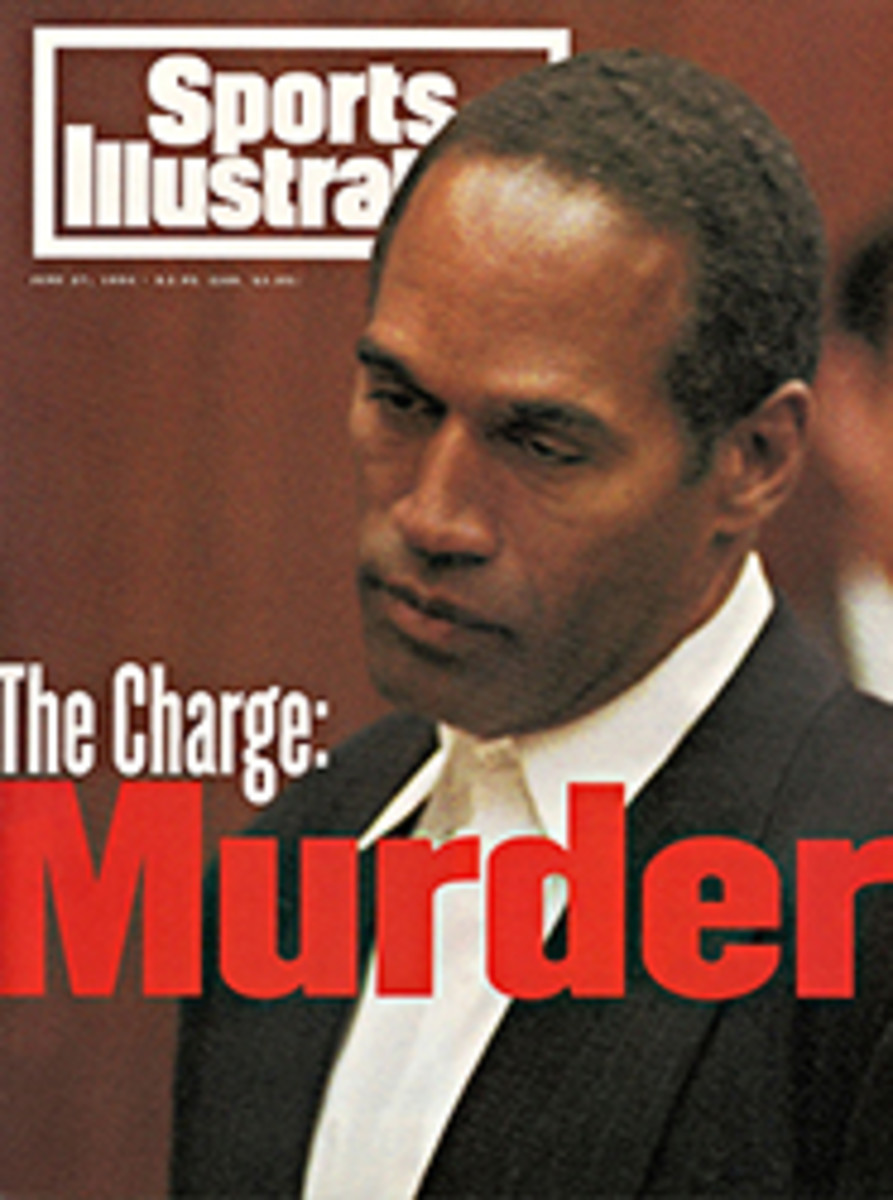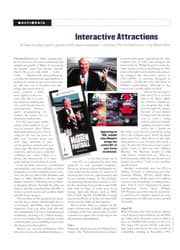
Tally Me, Sir!
It is a half hour before game time, and the ball field is alive with the ballet of batting practice. Women in bonnets and hoop skirts drift over from a nearby general store and from a pharmacy, which displays such 19th-century nostrums as Dr. Kilmer's Swamp Root and Chamberlain's Pain-Balm for rheumatism, neuralgia, sciatica, lame back, lumbago and gout. On a canopied bandstand behind home plate, a five-piece brass band plays Yankee Doodle Dandy.
Here, within the friendly confines of historic Ohio Village in Columbus, the clock has been turned back to the Civil War era—not only on the wooden sidewalks and in the one-room schoolhouse, but also on the village's grassy meadow. Here the game of base ball is about to be played according to the customs and rules of the day. Long before instant replay and AstroTurf and bench-clearing brawls, when base had yet to meet ball in the name of the game, America's budding pastime was the sport of gentlemen. Their goals: to have a bit of fun, take some exercise in the fresh air and, with luck, tally a few more aces than the opposition.
In this genteel brand of ball, circa 1858, players can be fined 25 cents for swearing or spitting. Familiar terms must be unlearned—a run, for example, is an ace. A batter is a striker, a pitcher a hurler. The player who catches the hurler's tosses is called the behind. A foul ball is called a foul tick. Spectators, even ladies, are known as cranks.
Many of the game's rules seem equally quaint. (Not for another 12 years will an umpire call balls and strikes, and then never on the first pitch.) The striker, if he pleases, can point to the spot where he would like the hurler to deliver the ball. The hurler stands with his legs crossed, one hand behind his back, 45 feet from a circular home plate. He throws underhanded. No one's hands are protected in any way. (The first padded glove will not appear for 20 or so years.) There is no stealing (the term itself wasn't used until 1871 and stolen bases won't show up in box scores and the official record until 1886). Balls caught on the fly or on one bounce are outs. A base runner cannot be doubled off a base on a ball caught in the air; he is allowed a free return. But he runs at his own peril on a ball caught on a bounce.
The three fielders manning the bases must begin each play standing on base. The three outfielders cannot change position until the ball is struck. The shortstop can stand where the shortstop usually stands in the late 20th century or play anywhere else on the field.
A good many more rules make playing this bygone version of baseball not unlike driving a car in England. Each crack of the bat is like a trip through a rotary. Often, you've got to fight your instincts. I know, for one day last summer I was an Ohio Village Muffin, penciled in as the leadoff striker and invited to play an inning apiece at all nine positions. (George Plimpton, eat your heart out.)
Actually, the toughest part of being a Mullin was tying a proper bow in my red cravat, the chief adornment of our uniforms, which were patterned after a design in the 1866 Currier and Ives lithograph The American National Game. Well before batting practice I had buttoned up my pants and slipped on my long-sleeved white shirt bearing an Olde English M on the front shield. My pillbox hat had two horizontal red stripes. And my tie was a mess until I asked the team's backer, Col. Gottlieb Herold, for assistance. Her-old, who answers to Nick in 20th-century conversation, has been associated with the Muffins for seven years as a player and umpire. On this day, nattily attired in boots, a frock coat, a vest and a top hat, he is one of the historical interpreters who stay in character as they chat with the players and also with the cranks on the sidelines.
I ask Herold what he thinks of the idea of a player who would not take the field but only bat.
"A designated hitter in place of the pitcher," I say.
"Balderdash, sir. The game is for exercise. How else to get exercise but on the field?"
The Muffins, named for the sobriquet hung on a player who fumbles or muffs a ball, first took the field in Ohio Village in 1981. Inviting teams to their home field and barnstorming through a handful of Midwestern states, they have become rather like missionaries, preaching in actions and words the gospel of gentlemen's baseball. They are winning converts. The Great Black Swamp Frogs of Sylvania, Ohio; the Deep River Park Grinders of Hobart, Ind.; and a half dozen other teams in the region have put away their mitts and tidied up their manners to play like the Muffins. (Throughout the country, more than 50 teams play a version of antebellum ball.)
"It is a lot of fun," says the Grinders' captain, Jim Basala. "A lot of our guys are used to blood-and-guts softball, and some still play it. But by and large I think our guys prefer this. We all look forward to our practices on Tuesdays and Thursdays. You have to cross two bridges to get to our meadow. When you do, you're in character. You're playing the part of the ballplayer. It's a real kick. We've even instituted lines in practice. Ten cents every time somebody says some modern bit of slang like dude or chick."
Filmmaker Ken Burns, who made the acclaimed documentary The Civil War and is currently putting the finishing touches on a documentary on baseball that will be televised this fall on PBS, is not surprised at this return to the past. "As the game matured and evolved and reached a kind of stasis, it makes sense that the pure game of baseball in its many forms would be brought back, particularly in a time when the major league game seems to be so consumed with crisis. Teams like the Muffins are a reminder that below the surface, the real game waits for us."
Muffin baseball is our national pastime unplugged. I felt fortunate to wear their uniform and take the field with them. Pre-game ceremonies on a somewhat soggy Sunday included a stone toss (team representatives choose either the wet or dry side) to decide which team would strike first. Then we Muffins huddled not for a pep talk but to sing: "So here's to the Muffins, huzzah for the Muffins! Victory for the Muffins. We will win this base ball game."
Our opponent, the Freetown Village Base Ball Club of Indianapolis, was clearly the underdog, having lost on this field the last two years by a significant number of aces. Because of the intermittent rain, we did not play with the traditional custom-made leather ball. (Historical accuracy stops short of sacrificing a $35 ball to a wet field.) Instead we played with a kids' safety ball, which was easier on the hands though harder to propel to the apple trees out in deep midfield. The trees were in play, and so was everything else, as umpire Richard (Always Right) Schuricht explained.
"We were playing at another field on the west side of Columbus," he said. "A foul tick was struck, and it struck the top of two outhouses across the road and then struck a carriage. The behind was an astute gentleman, and he raced through the cranks and arrived just as the ball rolled off the front of the carriage. It struck the ground once, and he caught it. The striker was dead."
This Sunday's game, as it happened, was enlivened by a similar play. Our behind, James (Leaping) Leonard, caught a foul tick on one bound after it dropped from the bandstand canopy. Schuricht firmly but politely pointed his cane to the Freetown bench, declaring their striker dead.
We Muffins won handily, by a score of 12-2. Happily, I was able to aid the cause, both in the field and at bat. While hurling, I helped turn a double play—without knowing it. With one hand dead (one out) and a runner on first, I fielded a sharply hit one-hopper and threw to second. Instinctively, I looked to first to see if the relay would beat the striker. Not only was there no relay, there was no runner anywhere near first. My teammates were all heading off the field. Seeing my puzzled look, a bench-bound Muffin informed me, "You caught the ball on the bound, sir. The striker was dead. Huzzah."
As a striker, I went 2 for 4; in our game-breaking bottom of the third inning I scored one of our seven aces. My ace, however, was not automatically registered when my foot hit home base. According to a wonderful bygone ritual, I was required first to visit the tallykeeper's table, which on this day was decorated with red, white and blue bunting and situated some six feet in foul territory between home and third. With my left hand on the table and my right hand raised as if in a courtroom oath, I looked the tally-keeper in the eye and uttered the spirit-lifting words: "Tally me, sir." And then I rang the tallykeeper's bell.
PHOTO
GREG SAILOR/OHIO HISTORICAL SOCIETY
The Muffins' Hal Holland cut a striking figure among other players, an umpire and a crank.
PHOTO
OHIO HISTORICAL SOCIETY
During the war, Union prisoners played base ball at a Confederate camp in Salisbury, N.C.
John Grossmann is a freelance journalist who lives in Jamison, Pa.

